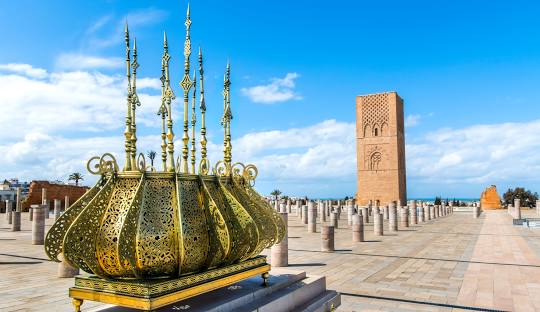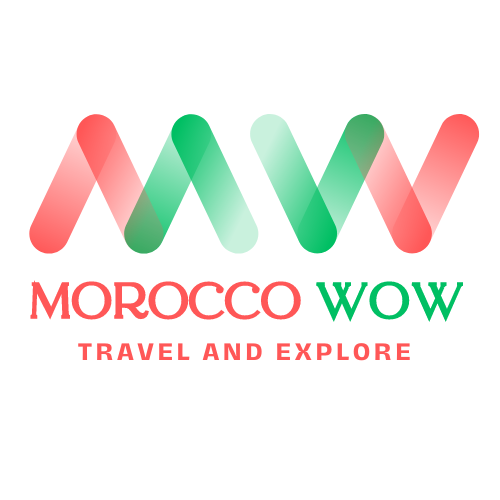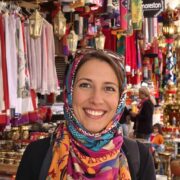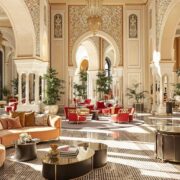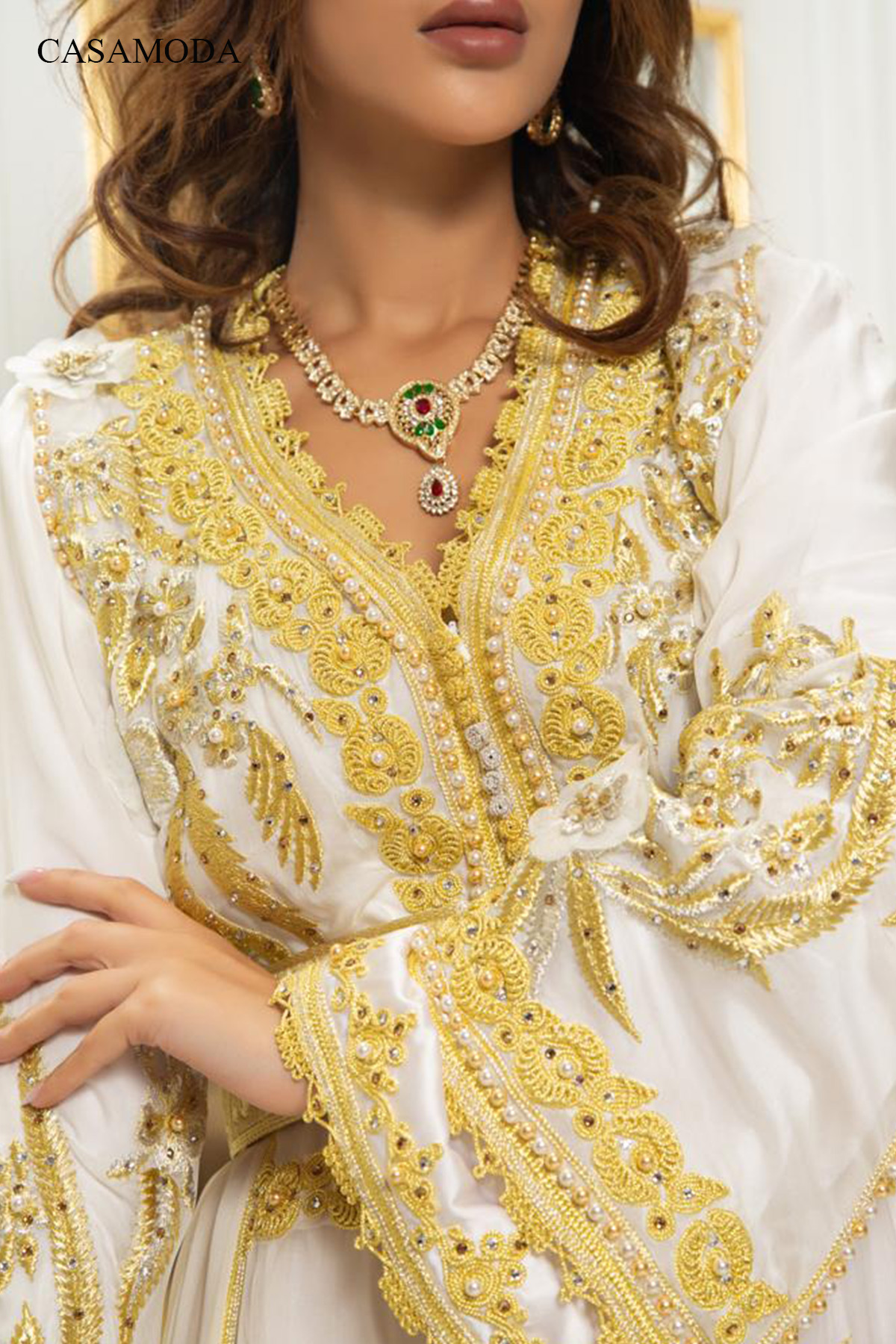
The Moroccan Caftan: A Symbol of Elegance, Tradition, and Timeless Beauty
The Moroccan caftan is more than just a garment; it is a symbol of Morocco’s rich history, culture, and craftsmanship. Known for its elegant, flowing silhouette, intricate designs, and luxurious fabrics, the caftan has become a staple of Moroccan fashion and an iconic piece of traditional dress. Whether worn during celebrations, religious ceremonies, or as a statement of style, the caftan continues to captivate with its beauty and versatility.
At MoroccoWow, we explore the fascinating world of the Moroccan caftan, from its cultural significance to its place in modern fashion.
1. The History and Cultural Significance of the Caftan
The caftan is a garment that dates back centuries and has roots in various cultures, from the ancient Middle East to North Africa. Its origins can be traced to the royal courts of Persia and the Moroccan Empire, where it was worn as a symbol of wealth, status, and luxury. Over time, the caftan made its way to Morocco, where it became deeply intertwined with the country’s own cultural identity.
The Moroccan Adaptation:
- The Moroccan caftan was influenced by Arab, Berber, and Andalusian styles, blending these various cultural elements into a unique and distinctive design. The garment became an important part of Moroccan fashion, especially for women, and was worn on special occasions such as weddings, festivals, and religious ceremonies.
- While the design of the caftan has evolved over time, its connection to Moroccan heritage remains strong. The caftan represents the country’s artistry, with each piece crafted with care, skill, and a sense of cultural pride.
2. The Structure and Design of the Caftan
The Moroccan caftan is known for its long, flowing silhouette and its ability to combine both elegance and comfort. Typically, it is a floor-length garment with a loose fit that allows for ease of movement. The design can vary depending on the occasion, the region, and the personal style of the wearer, but the core elements remain the same.
Key Features of the Moroccan Caftan:
- Fabric: The caftan is typically made from luxurious fabrics such as silk, satin, velvet, and brocade. For more formal occasions, the fabric may be richly embellished with embroidery, sequins, or beading, creating a dazzling effect that catches the light.
- Colors: Moroccan caftans come in a variety of colors, ranging from vibrant hues like royal blue, red, and emerald green to more neutral tones like cream, gold, and black. The choice of color often reflects the occasion and the wearer’s personal taste.
- Embroidery and Embellishments: One of the most defining features of a Moroccan caftan is the intricate embroidery that adorns the garment. Traditional Moroccan caftans are often embellished with gold or silver thread, beads, sequins, and crystals. The embroidery often features floral patterns, geometric designs, or motifs symbolizing luck, protection, and beauty.
- Belt (Hizam): The caftan is often worn with a belt, known as a hizam, which cinches the waist and adds shape to the loose garment. The hizam is typically made from rich materials like silk or velvet and may be decorated with intricate patterns or metallic accents.
3. The Caftan in Moroccan Weddings and Celebrations
The Moroccan caftan is most often associated with weddings and other festive occasions. Moroccan brides are typically seen wearing a caftan on their wedding day, symbolizing beauty, elegance, and tradition. The wedding caftan is often the centerpiece of the bride’s wardrobe, with elaborate embroidery, luxurious fabric, and intricate detailing making it a truly special garment.
The Role of the Caftan in Moroccan Weddings:
- The Wedding Caftan: On her wedding day, a Moroccan bride typically wears several different caftans, each more opulent than the last. The first caftan is often simpler, while later caftans are more elaborately decorated with luxurious fabrics, gold or silver embroidery, and stunning gemstones. This tradition reflects the bride’s transition from one stage of life to another, with each caftan representing a different chapter in her journey.
- The Takchita: In some regions of Morocco, particularly in the northern parts, the takchita is worn by the bride as a variation of the caftan. The takchita is a two-piece outfit consisting of an undergarment (the kandoura) and an overcoat (the caftan), both beautifully embroidered. The takchita is often worn during more formal celebrations, including weddings, and is a symbol of grace and sophistication.
Festivals and Other Special Occasions:
- Moroccan women also wear caftans during major religious holidays such as Eid al-Fitr and Eid al-Adha. The garment is a symbol of respect, beauty, and celebration, and wearing a beautifully adorned caftan during these occasions is a way to honor tradition and show reverence for the festivities.
- Caftans are also worn for more casual celebrations like family gatherings, feasts, and cultural events. The beauty and elegance of the garment are not reserved only for formal occasions, as it’s also worn as a way to express personal style.
4. The Caftan in Modern Fashion
While the traditional Moroccan caftan remains an essential part of Moroccan culture, it has also found its way into modern fashion. Today, designers are reinterpreting the classic caftan to create contemporary versions that combine traditional craftsmanship with modern aesthetics. The Moroccan caftan has even gained international recognition, with many fashion enthusiasts and celebrities wearing the garment as a symbol of exotic elegance and cultural richness.
Contemporary Moroccan Caftans:
- Fashion Forward Designs: Modern Moroccan designers have embraced the caftan, incorporating new fabrics, colors, and styles into their collections. They experiment with various cuts and silhouettes while maintaining the caftan’s traditional essence. For example, contemporary caftans may feature sleek, minimalist designs with subtle embellishments, or they may combine the traditional flowing shape with modern tailoring for a more structured look.
- Global Appeal: The Moroccan caftan has found popularity outside of Morocco, particularly in the fashion capitals of the world. International celebrities, such as Beyoncé and Jennifer Lopez, have worn Moroccan-inspired caftans at high-profile events, adding to the garment’s global allure.
- Fusion of Cultures: Many fashion designers around the world have been inspired by the beauty of the Moroccan caftan, incorporating elements of Moroccan embroidery, fabric, and design into their own collections. The fusion of Moroccan tradition with modern fashion continues to make the caftan a beloved garment worldwide.
5. Where to Buy a Moroccan Caftan
If you’re looking to own a Moroccan caftan, there’s no better place to find one than in Morocco itself. Many souks (markets) in cities such as Marrakesh, Fes, and Casablanca offer a wide variety of caftans, ranging from simple, everyday styles to luxurious, embroidered pieces. In addition to the souks, there are also specialized boutiques and workshops where you can commission custom-made caftans that reflect your personal taste and style.
For those outside of Morocco, online stores specializing in Moroccan fashion also offer a wide selection of caftans, making it easy to find the perfect piece no matter where you are.
Conclusion
The Moroccan caftan is a garment that embodies elegance, tradition, and timeless beauty. Whether worn during a wedding, a festival, or as an expression of personal style, the caftan remains a symbol of Moroccan craftsmanship and cultural heritage. With its intricate designs, luxurious fabrics, and rich history, the caftan continues to captivate and inspire, both in Morocco and around the world.
At MoroccoWow, we celebrate the artistry and elegance of the Moroccan caftan, a garment that transcends time and continues to play an important role in the fashion and culture of Morocco.
Recent Posts
Empowering Adventures: A Solo Female Travel Guide to Morocco in 2025
Affordable Ways to Fly to Marrakech from Manchester: Your Ultimate Guide
Experience Luxury at the Hotel Sofitel Lounge and Spa Marrakech: A Gateway to Relaxation and Elegance
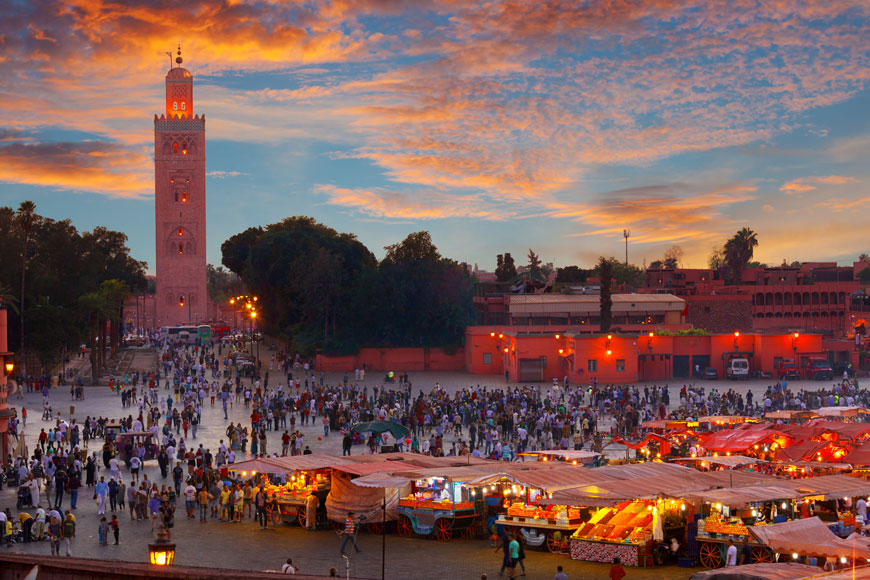
Marrakech

Chefchaouen
